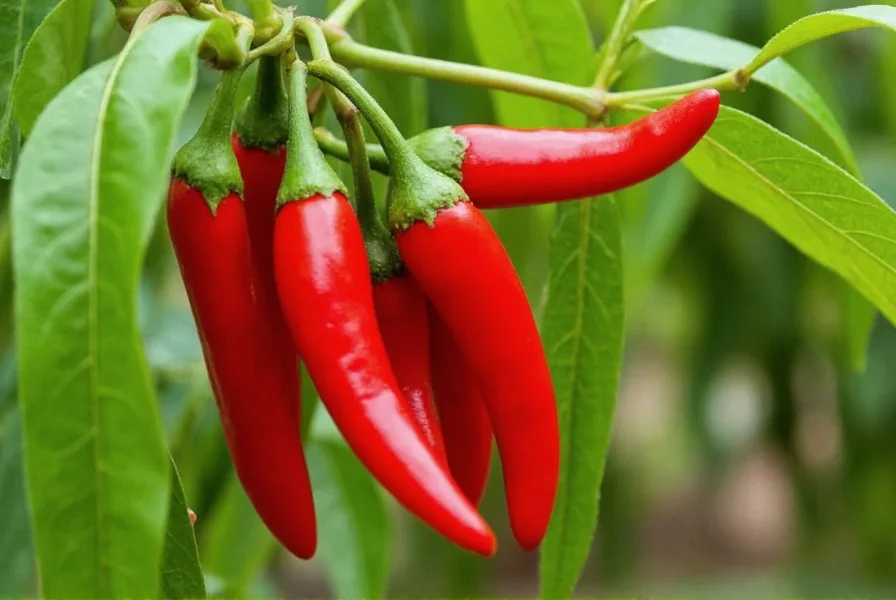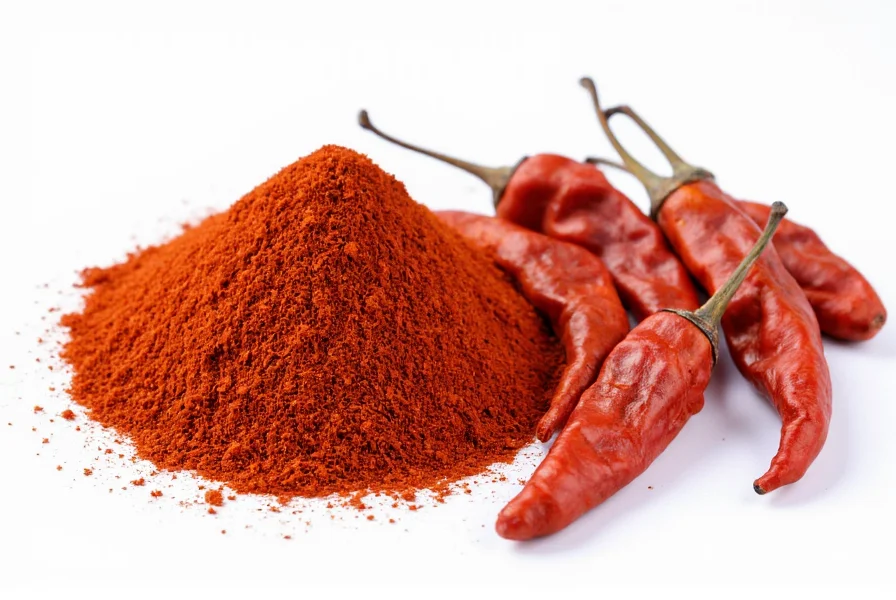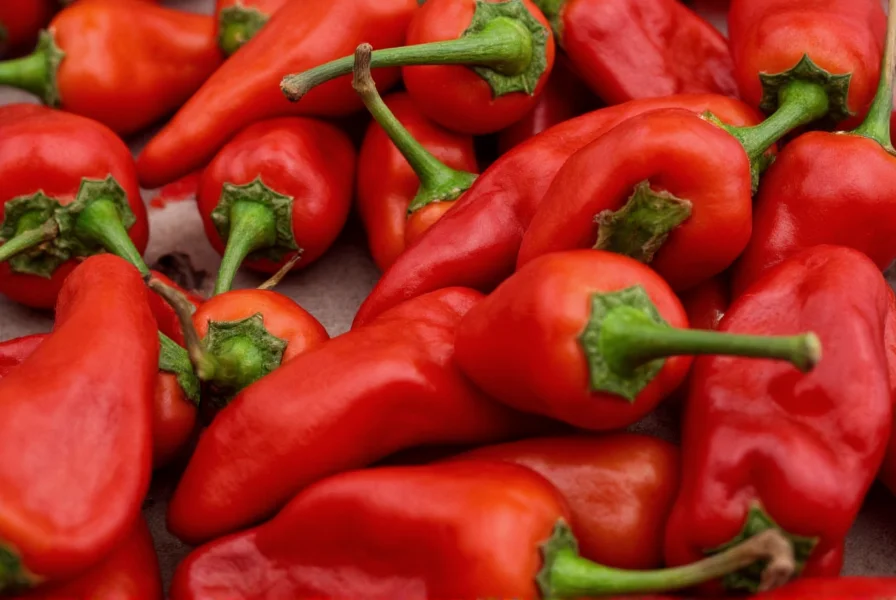Cheyenne pepper represents a carefully cultivated variety within the cayenne family, bred specifically for consistent heat levels and drying characteristics. Unlike generic cayenne peppers that vary significantly in appearance and potency, Cheyenne peppers maintain uniformity across commercial crops, making them preferred by food manufacturers for spice production. This cultivar delivers reliable medium-high heat without the extreme variability found in other cayenne types.
Understanding Cheyenne Pepper Characteristics
Measuring 30,000-50,000 Scoville Heat Units (SHU), Cheyenne peppers occupy the upper-mid range of the heat spectrum. For context, this makes them approximately 12-20 times hotter than jalapeños but significantly milder than habaneros. The slender, tapered pods typically reach 6-7 inches in length with thin walls ideal for efficient drying. As they mature, Cheyenne peppers transition from dark green through yellow-orange stages before achieving their characteristic vibrant red color.
What truly distinguishes Cheyenne peppers from generic cayenne varieties is their consistent performance in agricultural settings. Developed through selective breeding, Cheyenne cultivars demonstrate reliable germination rates, uniform fruit set, and predictable heat levels across different growing conditions. This consistency proves invaluable for commercial spice producers requiring standardized products.

Cheyenne vs Cayenne: Clarifying the Confusion
The frequent confusion between Cheyenne and cayenne peppers stems from marketing practices rather than botanical accuracy. Cheyenne refers specifically to a patented cultivar developed for commercial production, while cayenne describes a broad category of hot chili peppers. Think of Cheyenne as a specific brand within the cayenne family, much like Honeycrisp represents a particular apple variety among all apples.
| Characteristic | Cheyenne Pepper | Generic Cayenne |
|---|---|---|
| Heat Level (SHU) | 30,000-50,000 (consistent) | 30,000-100,000 (variable) |
| Wall Thickness | Thin (ideal for drying) | Variable |
| Agricultural Use | Commercial dried pepper production | Both fresh and dried markets |
| Pod Shape | Uniform slender taper | Variable shapes/sizes |
Culinary Applications of Cheyenne Peppers
Due to their thin walls and consistent heat profile, Cheyenne peppers excel in dried applications rather than fresh culinary uses. Food manufacturers primarily process them into:
- Dried pepper flakes for pizza and Italian cuisine
- Ground cayenne powder for spice blends
- Hot sauce base ingredients requiring standardized heat
- Dehydrated seasoning mixes
Home cooks seeking authentic Cheyenne pepper experience should look for products specifically labeled with this cultivar name, as generic "cayenne" products may deliver unpredictable heat levels. When using Cheyenne-based products, start with smaller quantities than you would with generic cayenne due to their reliable medium-high heat.

Growing Cheyenne Peppers Successfully
Gardeners interested in cultivating Cheyenne peppers should note their specific requirements. These plants thrive in warm climates with full sun exposure and well-draining soil. Start seeds indoors 8-10 weeks before the last frost date, maintaining soil temperatures around 80°F for optimal germination. Cheyenne pepper plants typically reach 24-30 inches in height with moderate spacing requirements of 18-24 inches between plants.
The growing season spans approximately 70-80 days from transplanting to maturity. Unlike some cayenne varieties that produce fruit continuously, Cheyenne peppers often set fruit in distinct waves, making them suitable for commercial harvesting schedules. Gardeners should harvest peppers when they achieve full red coloration for maximum heat development and drying efficiency.
Where to Find Authentic Cheyenne Pepper Products
Locating genuine Cheyenne pepper products requires careful label examination. Commercial spice producers sometimes use "Cheyenne" as a marketing term without using the actual cultivar. Look for products that specifically mention the Cheyenne cultivar on packaging, particularly from agricultural cooperatives or specialty spice companies. Seed catalogs specializing in commercial pepper varieties offer the most reliable source for home gardeners seeking authentic Cheyenne pepper seeds.
When purchasing dried products, examine the flakes for uniform color and size—characteristics of the Cheyenne cultivar's consistency. Avoid products with significant color variation or mixed pod sizes, which suggest generic cayenne blends rather than true Cheyenne peppers.
Frequently Asked Questions
Is Cheyenne pepper the same as cayenne pepper?
No, Cheyenne pepper is a specific cultivar within the cayenne family. While all Cheyenne peppers are technically cayenne peppers, not all cayenne peppers are Cheyenne cultivars. Cheyenne represents a standardized variety developed for commercial production with consistent heat levels (30,000-50,000 SHU) and drying characteristics, whereas generic cayenne peppers vary significantly in appearance, heat, and agricultural performance.
How hot is Cheyenne pepper compared to other common peppers?
Cheyenne pepper measures 30,000-50,000 Scoville Heat Units, placing it 12-20 times hotter than jalapeños (2,500-8,000 SHU) but significantly milder than habaneros (100,000-350,000 SHU). It's comparable to other cayenne varieties in heat range but offers more consistent potency. Cheyenne pepper provides reliable medium-high heat without the extreme variability found in non-cultivar cayenne peppers.
Can I grow Cheyenne peppers in my home garden?
Yes, home gardeners can successfully grow Cheyenne peppers with proper conditions. These plants require full sun, well-draining soil, and warm temperatures (minimum 65°F). Start seeds indoors 8-10 weeks before last frost, maintaining soil temperature around 80°F for germination. Plants reach 24-30 inches tall and produce slender 6-7 inch pods that mature from green to bright red in 70-80 days. Space plants 18-24 inches apart for optimal growth.
What makes Cheyenne pepper better for drying than other varieties?
Cheyenne peppers feature notably thinner walls than many cayenne varieties, allowing for faster, more uniform drying with less risk of mold development. Their consistent pod size and shape enable efficient processing in commercial drying operations. The cultivar's reliable heat profile ensures standardized spice products, while the vibrant red color remains stable during dehydration, producing visually appealing flakes and powders.
How can I identify authentic Cheyenne pepper products?
Look for specific mention of the Cheyenne cultivar on product labels, particularly from agricultural cooperatives or specialty spice producers. Authentic Cheyenne pepper products display uniform red color and consistent flake size. Avoid products labeled simply as "cayenne" without cultivar specification, as these typically contain variable pepper blends. Commercial seed catalogs specializing in pepper varieties offer the most reliable source for genuine Cheyenne pepper seeds.











 浙公网安备
33010002000092号
浙公网安备
33010002000092号 浙B2-20120091-4
浙B2-20120091-4